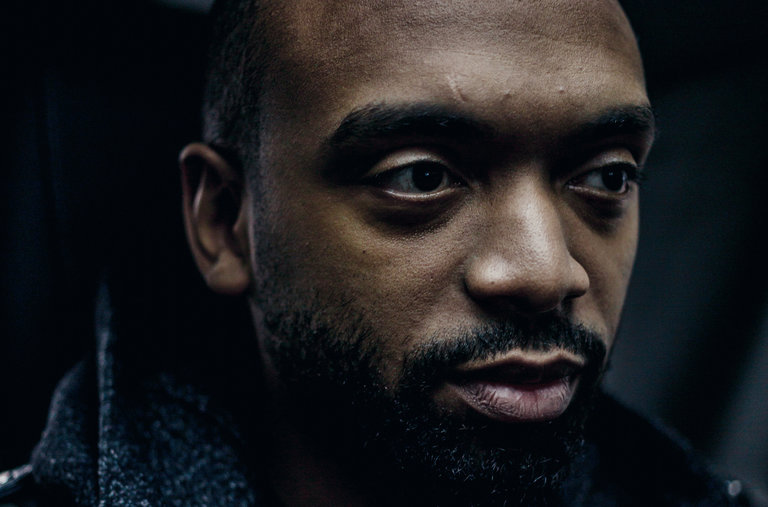The evening before Americans went to the polls to cast their votes in the midterm elections, some of the most powerful gatekeepers in American fashion cast a vote of their own. For change.
Monday night, the CFDA/Vogue Fashion Fund — the most prestigious and lucrative of the awards for emerging designers in the United States — was handed to Kerby Jean-Raymond of Pyer Moss, a Haitian-American designer who has effectively become the sartorial bard of the African-American cultural experience. He beat nine other finalists.
“At a time when our world faces so many challenges, I’m impressed by this year’s winners,” said Anna Wintour, editor in chief of Vogue and artistic director of Condé Nast. “Their work highlights a high degree of creativity and a deep-rooted commitment to the notion of community,” she added, calling it an expression of “the optimism and inclusivity of the very best American fashion.”
The two runners-up were Emily Adams Bode, whose men’s wear brand Bode focuses on sustainability and craft, and Jonathan Cohen, whose namesake women’s line has its roots in painterliness and print.
“This is unexpected,” Mr. Jean-Raymond said gleefully from the makeshift stage in a warehouse at the Brooklyn Navy Yards, where the event was held. (Another sign of change: the willingness of fashion to embrace a new borough). He was wearing black leather pants and a matching cropped leather jacket from his fall collection, which celebrated the history of the black cowboy.
The award may have been a surprise for the designer, but it wasn’t for most of the audience, which gave him a standing ovation.


Mr. Jean-Raymond founded his label in 2013 as a men’s wear brand, and first started using the runway as a means to explore activism in 2015 with a “Black Lives Matter” collection (never sold and currently in the archive of the National Museum of African-American History and Culture). That was followed by a show that juxtaposed the ideas of Bernie Madoff and Bernie Sanders. But it wasn’t until late last year, when he bought his company back from his financers and became the sole owner, that he truly found a unique and multilayered voice — as well as a deal with Reebok that provided a certain amount of security.
He has since shied away from calling his company a fashion brand, saying he thinks of it more as an art project or a social experiment, though it also involves very good clothes. He uses it almost as a freewheeling exploration of various aspects of black history, from the Negro Motorist Green Book (a travel guide used by African-Americans to navigate the Jim Crow South) to once-defining brands like Cross Colours and FUBU.

Pyer Moss, spring 2019.CreditAngela Weiss/Agence France-Presse — Getty Images
His most recent show, held at the Weeksville Heritage Center in Brooklyn on a rainy evening with very grumbling attendees, imagined what “black American leisure” might look like in a world where there was no threat of the police being called on a black man creating a community garden, and was so accomplished that all the damp, cranky guests went away practically bouncing on their toes with glee.
Earlier Monday, as fashion folk and their celeb friends like Emily Blunt (who presented the prize after everyone had finished eating — or not — their chicken potpies) and La La Anthony (who was wearing Pyer Moss) and Georgina Chapman of Marchesa (who continues her tiptoe back into the world) mingled and sipped Champagne and speculated on who might nab the prize, Mr. Jean-Raymond attributed his success to having a team around him that came from the arts, but not, necessarily, fashion.
“I’m a designer — I don’t need another designer around me,” he said. “I need different perspectives. I need an architect! They all love fashion, but none of them are jaded about fashion.”
It’s tempting to be jaded about the fashion fund itself, which was celebrating its 15th anniversary (fashion loves an anniversary). Established to support the American fashion industry in the aftermath of the Sept. 11, 2001, attacks, it has unquestionably nurtured some designer names that have become full-fledged brands core to the New York Fashion identity: Proenza Schouler, Thom Browne, Prabal Gurung, Joseph Altuzarra. But as a booklet left on every plate listing all winners, runners-up and finalists since 2004 perhaps inadvertently demonstrated, several previously celebrated names have also dropped away: Behnaz Sarafpour, Trovata, Doo.Ri, Rogan and Sophie Theallet, to name a few.
La La Anthony wore Pyer Moss to the awards event.CreditEvan Agostini/Invision, via Associated Press
It’s not an award’s job to guarantee success, of course. The $400,000 prize and a yearlong mentorship with an established fashion executive does not a secure business make, though it helps. (Runners-up each get $150,000 and mentorship.) But it does reveal that talent and a moment in the spotlight isn’t enough. Most of all, a designer needs a unique point of view and the patience to break through. Mr. Jean-Raymond has that.
He also other qualities that help with success: a sense of humor, and some perspective on it all. Accepting his award, he noted of the famously intimidating Ms. Wintour, “I’m going to say something that Anna probably doesn’t want me to say: She’s a really nice person.”
It was a striking sentiment to hear from a podium in the current political climate.








